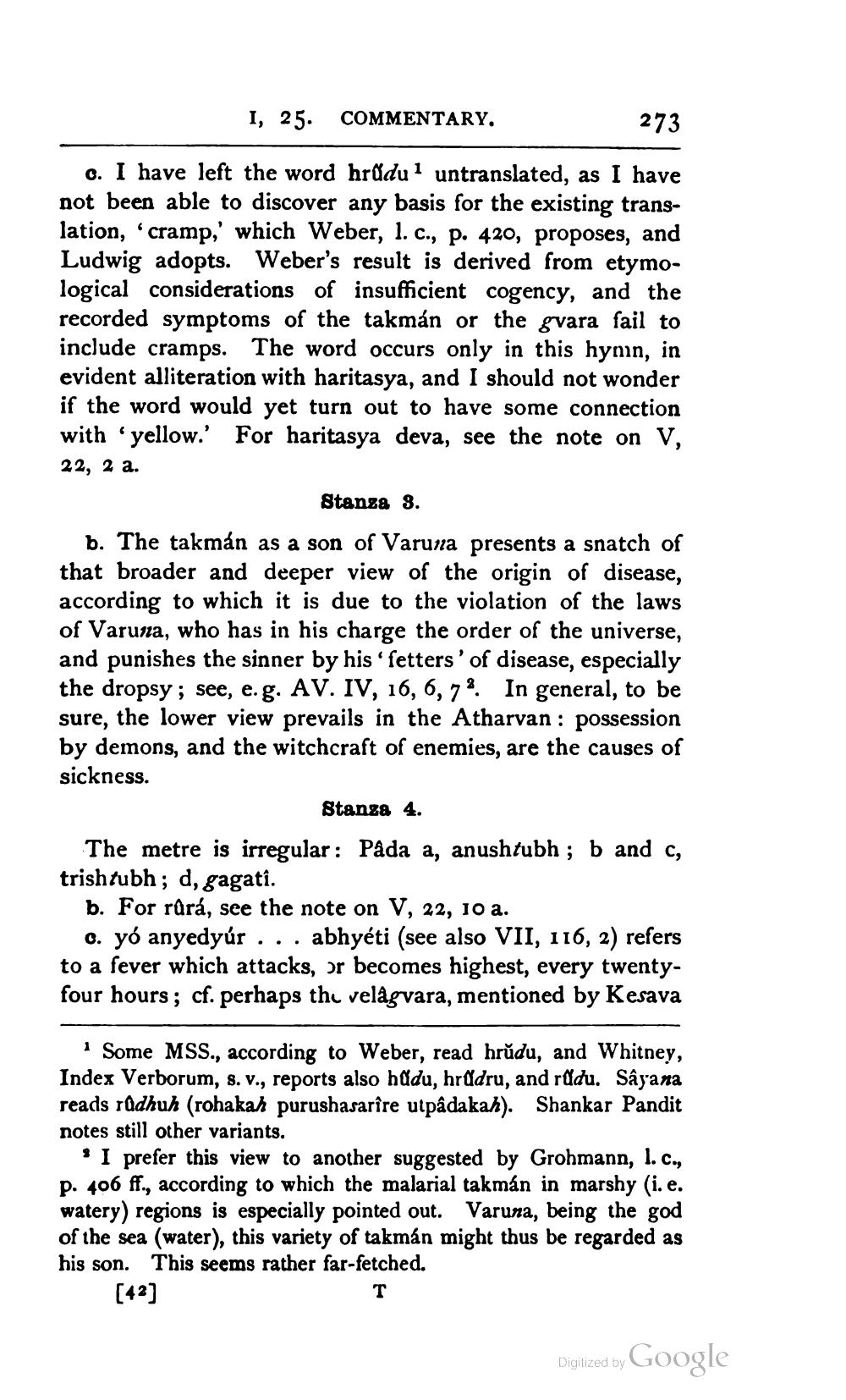________________
COMMENTARY.
I, 25.
273
c. I have left the word hrudu1 untranslated, as I have not been able to discover any basis for the existing translation, 'cramp,' which Weber, 1. c., p. 420, proposes, and Ludwig adopts. Weber's result is derived from etymological considerations of insufficient cogency, and the recorded symptoms of the takmán or the gvara fail to include cramps. The word occurs only in this hymn, in evident alliteration with haritasya, and I should not wonder if the word would yet turn out to have some connection with 'yellow.' For haritasya deva, see the note on V,
22, 2 a.
Stanza 3.
b. The takmán as a son of Varuna presents a snatch of that broader and deeper view of the origin of disease, according to which it is due to the violation of the laws of Varuna, who has in his charge the order of the universe, and punishes the sinner by his 'fetters' of disease, especially the dropsy; see, e. g. AV. IV, 16, 6, 7. In general, to be sure, the lower view prevails in the Atharvan: possession by demons, and the witchcraft of enemies, are the causes of sickness.
Stanza 4.
The metre is irregular: Pâda a, anushubh ; b and c, trishtubh; d, gagatî.
b. For rûrá, see the note on V, 22, 10 a.
...
c. yó anyedyúr . abhyéti (see also VII, 116, 2) refers to a fever which attacks, or becomes highest, every twentyfour hours; cf. perhaps the velågvara, mentioned by Kesava
1 Some MSS., according to Weber, read hrůdu, and Whitney, Index Verborum, s. v., reports also hadu, hrudru, and radu. Sâyana reads rudhuh (rohakah purushasarîre utpâdakah). Shankar Pandit notes still other variants.
I prefer this view to another suggested by Grohmann, 1. c., p. 406 ff., according to which the malarial takmán in marshy (i. e. watery) regions is especially pointed out. Varuna, being the god of the sea (water), this variety of takmán might thus be regarded as his son. This seems rather far-fetched.
[42]
T
Digitized by
Google




